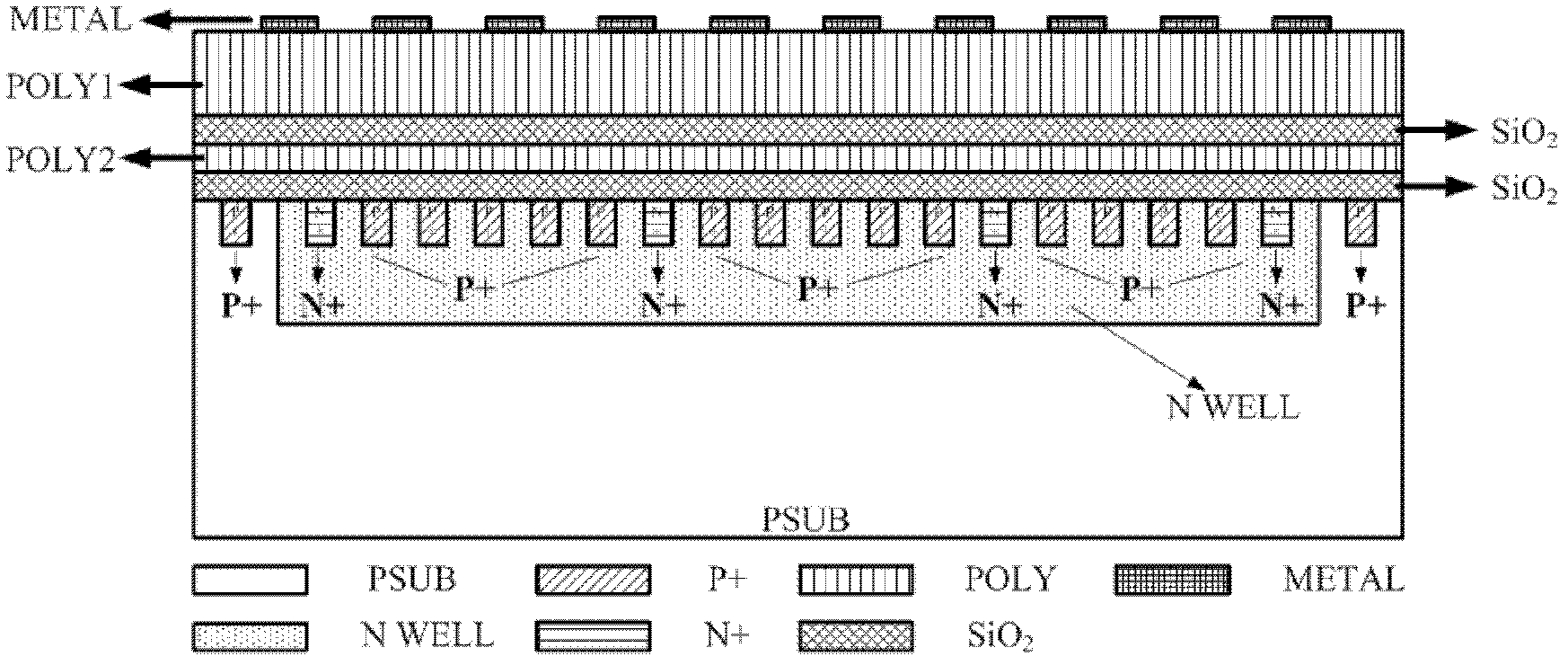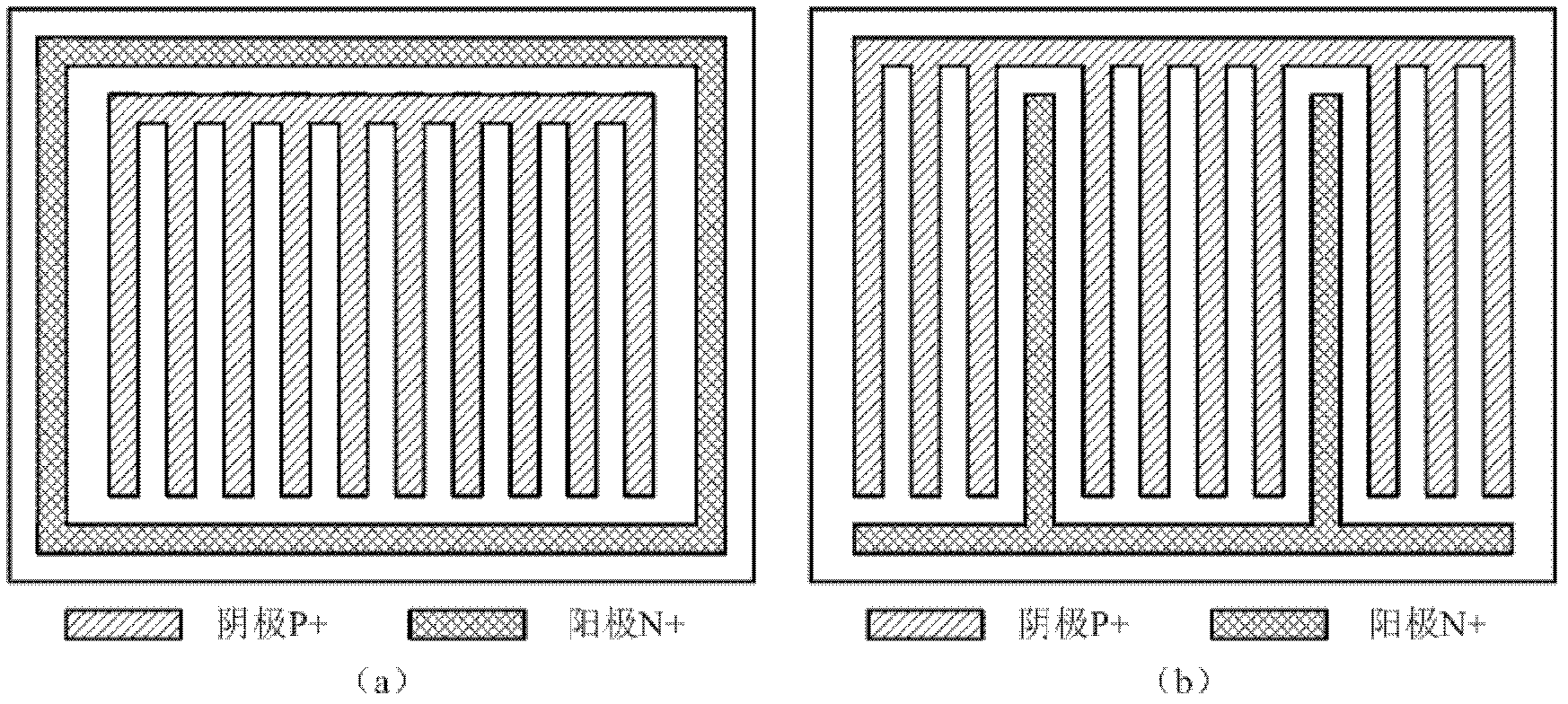Lamination differential photoelectric detector based on standard CMOS (complementary metal oxide semiconductor) process
A photodetector and process technology, applied in the field of photodetectors, can solve problems such as complex optical communication systems, input signal asymmetry, input load imbalance, etc., and achieve the effects of improving light injection efficiency, increasing working area, and simplifying structure
- Summary
- Abstract
- Description
- Claims
- Application Information
AI Technical Summary
Problems solved by technology
Method used
Image
Examples
Embodiment Construction
[0015] In order to make the object, technical solution and advantages of the present invention clearer, the implementation manner of the present invention will be further described in detail below in conjunction with the accompanying drawings.
[0016] The laminated differential photodetector based on the standard CMOS process of the present invention comprises: an MSM type photodetector, a dual photodiode (DPD) type photodetector, and an isolation layer. The specific structure of the device is as figure 1 As shown, the MSM-PD is prepared on the polysilicon POLY1, and the double photodiode is prepared on the P-type substrate, and the two are separated by a layer of highly doped polysilicon (POLY2) sandwiched by two layers of SiO2. In the dual photodiode, the P+ / Nwell (N well) junction is used as the working diode, and the Nwell / Psub junction is used as the shielding diode to isolate the slow photogenerated carriers formed by the substrate. The SiO2 layer isolates the photo-ge...
PUM
 Login to View More
Login to View More Abstract
Description
Claims
Application Information
 Login to View More
Login to View More - R&D
- Intellectual Property
- Life Sciences
- Materials
- Tech Scout
- Unparalleled Data Quality
- Higher Quality Content
- 60% Fewer Hallucinations
Browse by: Latest US Patents, China's latest patents, Technical Efficacy Thesaurus, Application Domain, Technology Topic, Popular Technical Reports.
© 2025 PatSnap. All rights reserved.Legal|Privacy policy|Modern Slavery Act Transparency Statement|Sitemap|About US| Contact US: help@patsnap.com


